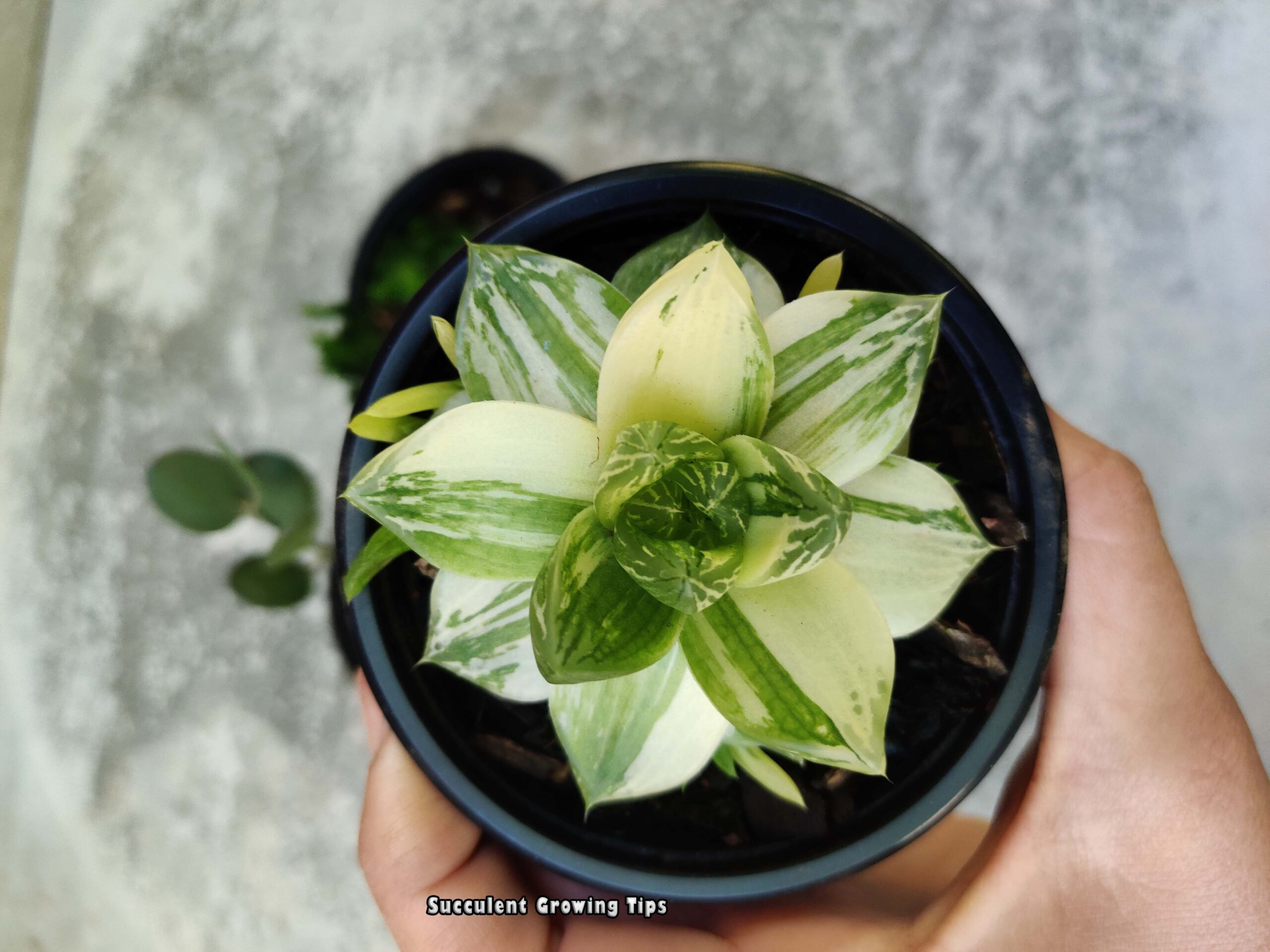Haworthia cymbiformis also known as the Cathedral Window plant is a cute, small growing succulent native to South Africa. It is a popular plant due to its ability to tolerate shade
Description
Haworthia cymbiformis grows to approximately 10cm in diameter and 5cm tall. It has clumping habit and produces a great many offsets which can create a carpet of small, green rosettes.
The leaves are bright green and translucent at the very top. When held up to the sky and the sun it almost feels like you’re looking through a stained window, hence it’s nickname.
When this plant is stressed, it can turn brown. The stress usually comes from the immediate growing environment and can be things like cold, sun exposure, growing medium or the seasons.
The variegated version of Haworthia cymbiformis is a gorgeous white and bright green colour. It is not unusual for albino offsets or half white, half green offsets to appear.
Care
Haworthia cymbiformis and variegata prefer to grow in bright shade or dappled light over full sun.
Our nursery plants grow under 30% shadecloth all year round. Better the light, more compact the growth.
These succulents will also survive indoors, but do make sure they are in a spot with plenty of light.
Water and rain do not seem to bother the cymbiformis as long as the potting mix is well draining and the pot has a hole.
Re-potting is recommended every year or two. Use good quality succulent potting mix.
Propagation
Propagating Haworthia cymbiformis is incredibly easy and is best done by pulling off the offsets. When the offsets are left on the mother plant until they grow into a rosette shape, they will have grown roots of their own, which will help with getting established.
Leaf propagation is difficult and often unsuccessful.
Haworthia cymbiformis can be propagated from seed, but the process can be lengthy and, in my opinion, not worth it. This plant can grow well over 30 offsets per year once mature and before you know it, you’ll have a cymbiformis army.
Pests
Haworthia cymbiformis is relatively pest free. It can get the occasional mealybug in-between the leaves or aphids on flower stalks, but they tend to go after tastier plants.
Slugs and snails, however, can do quite a bit of damage and will take massive chunks out of the leaves.
Root mealybugs can also attack, but if you repot regularly, you’ll be able to see and control them.
Toxicity
Haworthia cymbiformis and variegata are not toxic or poisonous to dogs, cats, other pets or humans.
Where Can I Get It
Many online shops, including ours, sell these plants.
